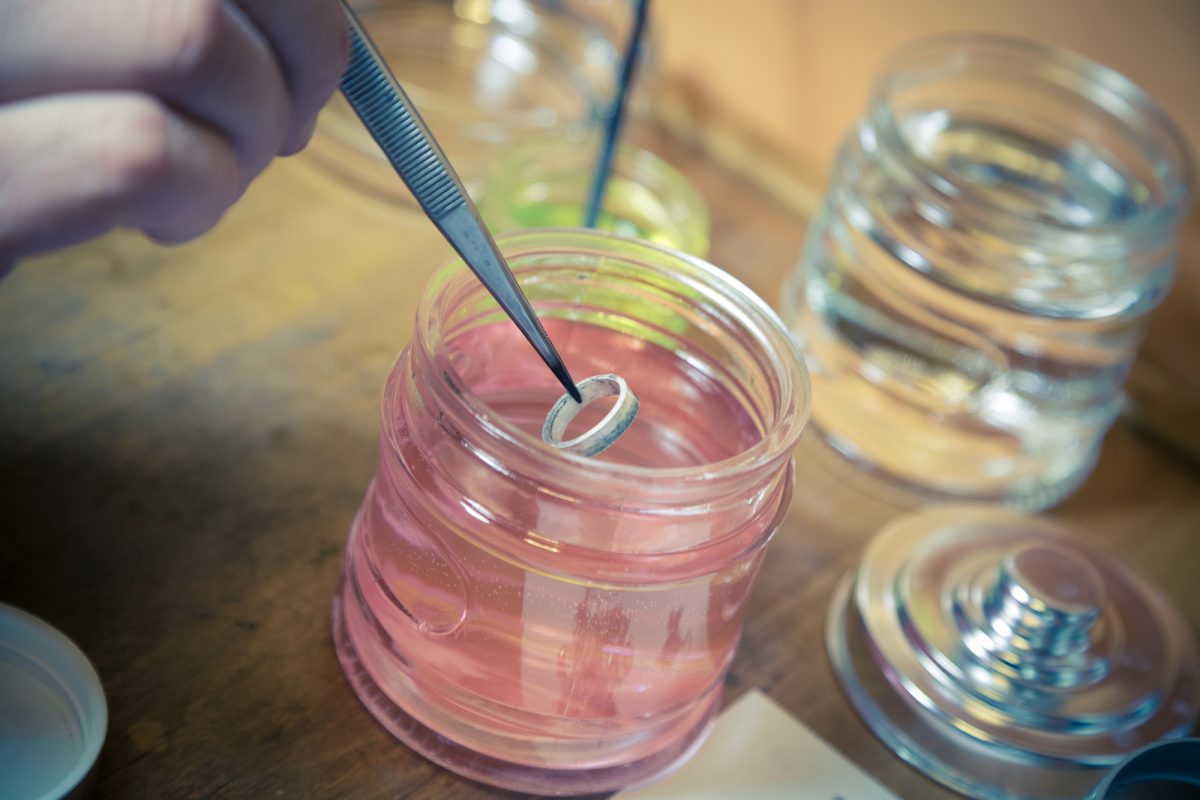The chemical etching procedure has been used in metalworking for many years. It is the processing of metal surfaces with the help of chemicals and electricity. During the procedure, the master removes the metal layer and thus creates a specific pattern on a specific product.
In order to change the surface of metal products, etching solutions are used, mainly from sulfuric, nitric and hydrochloric acids. Sulfuric acid should be mixed with water, carefully be poured into the water, and not vice versa. When water is poured into sulfuric acid, a rapid boiling of the mixture occurs, causing a strong splashing of the acid. The temperature of the mixture rises greatly, and if the acid is poured in too quickly and too much, the mixture heats up so much that the glass vessels in which the mixing is performed can burst. A liquid consisting of nitric, sulfuric or hydrochloric is used to work with stainless or heat-resistant steel. Moreover, often one product is treated with several substances at once, so one can completely remove all contamination and develop a drawing.
Aluminum and its alloys are etched with acid and alkaline solutions. At the same time, if sodium chloride is added to the solution, the final product will have a uniform pattern in all areas.

